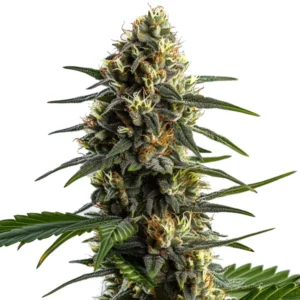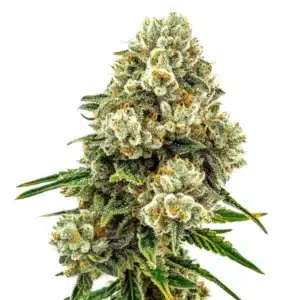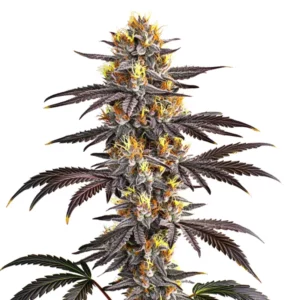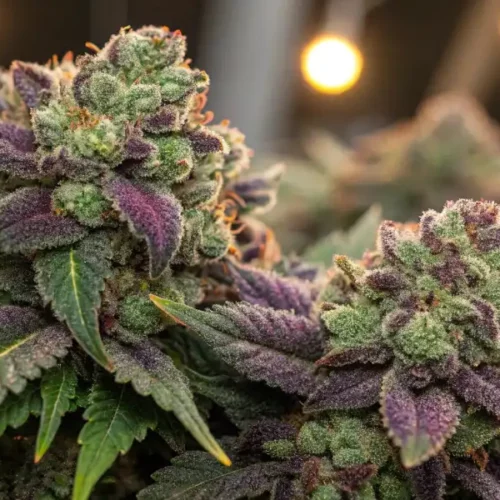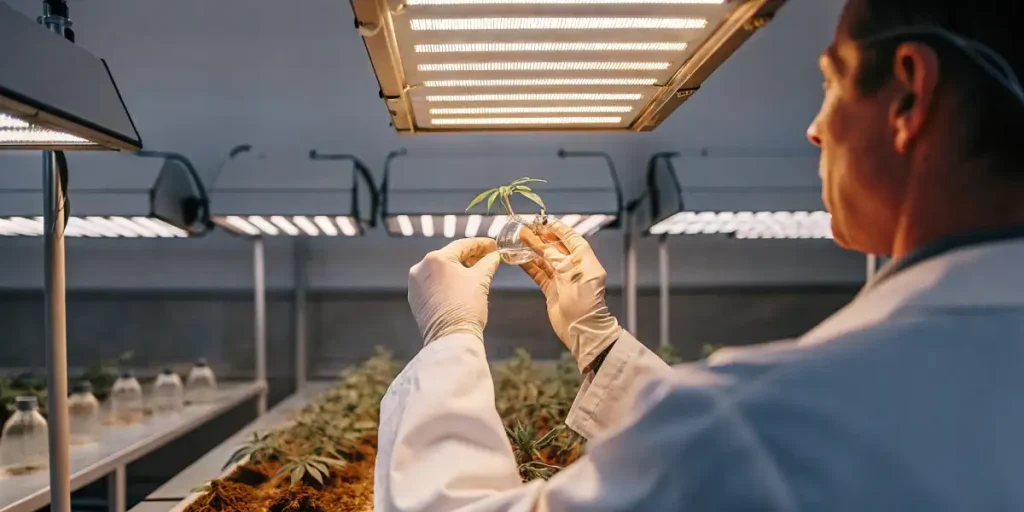
Cannabinoid Pathway: A Deep Dive
The cannabinoid pathway is a critical biological system, especially for those interested in the effects of cannabis. From first-time cannabis seed purchasers to long-time growers, knowledge of this pathway can significantly impact the quality and potency of their harvest. This article will delve into the numerous aspects, from its role in humans to its impact on pain management and the effects of THC.
Before we delve into the gritty details, it’s essential to break down what exactly this system is. It’s a complex system of cell receptors and molecules in the human body. These receptors, called CB1 and CB2, interact with cannabinoids, the active compounds found in cannabis. The interaction between these receptors and cannabinoids is what produces the effects we associate with cannabis consumption.
Now that we’ve established a basic concept, let’s get into the specifics. We’ll discuss the effects of cannabis on this system, its role in pain management, and the impact of THC cannabis consumption.
Effects of Cannabis on the Cannabinoid Pathway
When you consume cannabis, the cannabinoids in the plant interact with the CB1 and CB2 receptors in your body. This interaction triggers various physiological responses, resulting in the effects commonly associated with cannabis use. For example, the strain ‘Critical 2.0’ from Blimburn Seeds is known for its relaxing and calming effects. These effects are the result of the interaction between the cannabinoids in Critical 2.0 and the cannabinoid pathway in the human body.
The effects of cannabis are not just limited to the feelings of relaxation and calm. Research studies have shown that cannabis can also impact appetite, mood, memory, and pain sensation. The strain ‘Wombat‘ from Blimburn Seeds, for example, is reported to enhance mood and stimulate appetite. This is because the cannabinoids in Wombat interact in a way that triggers these specific responses.
Comprehending the interaction of cannabis in humans is crucial to appreciate the full spectrum of the effects of cannabis. The diverse responses triggered by this interaction range from the euphoric high often associated with cannabis use, to therapeutic benefits such as pain relief and appetite stimulation. This varied response is due to the different types of cannabinoids present in different strains of cannabis and how they interact.
Research studies have shown how the variations in the cannabinoid content of different cannabis strains can result in different effects. For instance, a strain with a high CBD content might interact differently from a strain with high THC content. This knowledge about the effects of cannabis can aid users and growers in choosing the appropriate strains for their specific needs.
Promos & Deals
Role of Cannabinoid Pathway in Pain Management
When cannabinoids interact with the CB1 and CB2 receptors, they can decrease the perception of pain. This is why many people use cannabis for pain relief. The strain ‘Mamba Negra‘ from Blimburn Seeds, for instance, is often used for its potent pain-relieving properties. The cannabinoids in Mamba Negra interact with the receptors, which can help alleviate pain.
While more research is needed to fully understand the precise mechanisms at play, it’s clear that it plays a crucial role in pain management. This knowledge can help cannabis seed buyers and growers choose the right strains for their specific needs.
Comprehending its role in pain management extends beyond just the physical sensation of pain. It can also impact how we mentally and emotionally process pain. Some cannabinoids, for instance, have been shown to reduce anxiety and depression, both of which can contribute to the perception of pain. By interacting with this system, these cannabinoids can potentially offer a more holistic approach to pain management.
Research studies have also shown promise in the treatment of chronic pain conditions. For instance, conditions like fibromyalgia and endometriosis, which are often resistant to traditional painkillers, may respond positively to cannabinoids. This highlights the potentially significant role that comprehending this system can play in future pain management therapies.

Impact of THC on the Cannabinoid Pathway
Tetrahydrocannabinol (THC) is one of the most well-known cannabinoids in cannabis. It’s the compound responsible for the plant’s psychoactive effects. But how does THC impact the cannabinoid pathway?
THC primarily interacts with the CB1 receptors, located mostly in the brain. This interaction is what causes the ‘high’ associated with cannabis use. However, the effects of THC can vary depending on the individual and the specific strain of cannabis. For example, a strain with a high THC content, like ‘Gorilla Glue’ from env-blimburnseeds-blimburn20.kinsta.cloud, may produce more potent effects than a strain with lower THC levels.
Further knowledge of the impact of THC can help users and growers make more informed decisions about their cannabis use or cultivation. For instance, someone seeking a more potent psychoactive experience may choose a strain with high THC content, while those seeking therapeutic benefits without the ‘high’ might opt for a strain with higher CBD levels. This decision-making process is greatly aided by a clear comprehension of THC’s effects.
Research studies on THC’s interaction with the CB1 receptors have shown that it can have effects beyond just the psychoactive high. For instance, it can also impact functions like memory and appetite. These varied impacts underscore the complex nature of THC and the many ways in which THC and other cannabinoids can influence human physiology.
- Strains like ‘Critical 2.0‘ have calming effects due to their interaction with the body.
- ‘Wombat’ is reported to enhance mood and stimulate appetite, highlighting the varied effects of cannabis.
- The strain ‘Mamba Negra’ has potent pain-relieving properties, illustrating its role in pain management.
- Strains with high THC content, like ‘Gorilla Glue 4‘, show the impact of THC.
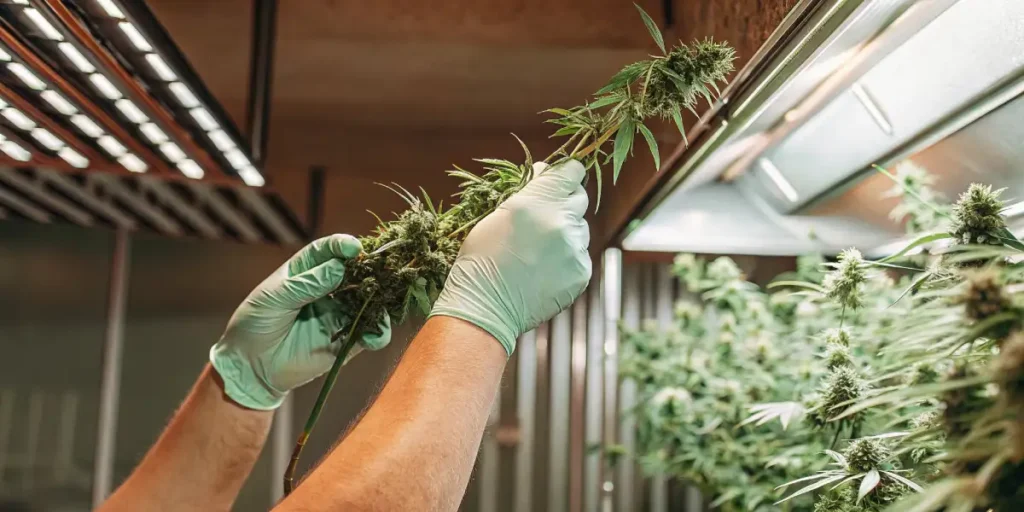
FAQs About the Cannabinoid Pathway
What is the cannabinoid pathway?
The endocannabinoid system, is a biological system composed of cell receptors and molecules. The primary receptors, CB1 and CB2, interact with cannabinoids, the active compounds in cannabis. This interaction triggers various physiological responses, resulting in the effects we associate with cannabis use.
Comprehending the endocannabinoid system can help cannabis users and growers make more informed decisions about which strains to use or grow. For example, if you’re looking for a strain that will help with pain management, you might choose a strain like ‘Mamba Negra’ that’s known for its pain-relieving properties.
Comprehending the endocannabinoid system in humans is fundamental for anyone interested in the therapeutic use of cannabis. It plays a significant role in how our bodies respond to cannabis, influencing everything from our perception of pain to our mood and appetite. By comprehending this system, we can make more informed decisions about cannabis use and potentially unlock new ways to treat a variety of health conditions.
Research studies on the endocannabinoid system are also shedding light on its potential role in treating other health conditions. For instance, it’s thought that this system could play a role in managing symptoms of conditions like epilepsy, multiple sclerosis, and even certain types of cancer. However, more research is needed in these areas.
How does cannabis affect the cannabinoid pathway?
When you consume cannabis, the cannabinoids in the plant interact with the CB1 and CB2 receptors in your body. This interaction triggers various physiological responses, including feelings of relaxation, enhanced mood, and decreased pain perception. The specific effects can vary depending on the cannabis strain. For example, ‘Critical 2.0’ is known for its relaxing effects, while ‘Wombat’ is reported to enhance mood and stimulate appetite.
Research studies have shown that cannabis can also affect other physiological functions, such as appetite and memory. Comprehending these effects can help users and growers choose the right cannabis strains for their needs.
The effects of cannabis can also be influenced by how it is consumed. For example, smoking or vaping cannabis allows the cannabinoids to enter the bloodstream quickly, resulting in a faster onset of effects. On the other hand, consuming cannabis edibles requires the cannabinoids to be processed by the liver, which can result in a slower onset of effects but may lead to a more prolonged experience.
It’s also worth noting that the effects of cannabis can vary from person to person. Factors such as a person’s individual biology, their tolerance to cannabis, and even their mood at the time of consumption can all influence how they respond to cannabis. This underscores the importance of comprehending its effects and how they shape the cannabis experience.
What is the function of the cannabinoid pathway in pain management?
The cannabinoid pathway plays a significant role in pain management. When cannabinoids interact with the CB1 and CB2 receptors, they can decrease the perception of pain. This is why many people use cannabis for pain relief. Strains like ‘Mamba Negra’ from env-blimburnseeds-blimburn20.kinsta.cloud are often used for their potent pain-relieving properties.
More research is needed to fully understand the mechanisms at play. However, it’s clear that cannabinoids play a crucial role in pain management. This knowledge can help users and growers choose the right strains for their specific needs.
For instance, strains rich in certain cannabinoids like CBD or CBC are becoming increasingly popular for their potential anti-inflammatory and analgesic properties. This is a testament to the importance of cannabinoids in pain management, as these cannabinoids interact to exert their effects.
Furthermore, research studies suggest that cannabinoids could offer novel ways to manage pain that don’t respond well to traditional painkillers. For many patients dealing with chronic pain, comprehending the significance of cannabinoids in pain management could potentially provide new avenues for relief.
How does THC impact the cannabinoid pathway?
Tetrahydrocannabinol (THC) primarily interacts with the CB1 receptors in the brain, causing the ‘high’ associated with cannabis use. The effects of THC can vary depending on the individual and the specific strain of cannabis. For example, a strain with a high THC content, like ‘Gorilla Glue’ from env-blimburnseeds-blimburn20.kinsta.cloud, may produce more potent effects than a strain with lower THC levels.
Grasping the impact of THC can help users and growers make more informed decisions about which cannabis strains to use or grow, depending on their desired effects.
While THC is often associated with its psychoactive effects, it’s important to note that its interaction can also have therapeutic benefits. For instance, THC has been shown to have analgesic properties and can also stimulate appetite, which can be beneficial for individuals dealing with conditions like chronic pain or cancer.
Research studies have also shown that the impact of THC can be modulated by other cannabinoids. For example, CBD has been found to mitigate some of the psychoactive effects of THC, demonstrating the complex interplay of compounds.
Why is comprehending the cannabinoid pathway important for cannabis growers?
For cannabis growers, comprehending this process can help guide decisions about which strains to grow. Different strains have different levels and types of cannabinoids, leading to varied interactions. For example, a grower interested in producing cannabis with pain-relieving properties might choose to grow a strain like ‘Mamba Negra’.
Moreover, knowledge about this process can aid in breeding efforts. By comprehending how different cannabinoids interact with it, growers can breed strains that produce specific effects. This can lead to the creation of unique and tailored cannabis products.
For instance, a grower might want to breed a strain that is particularly high in a certain cannabinoid, like CBD or CBC. Comprehending this process, and how different cannabinoids interact with it, can provide valuable insights into how to achieve this. It can also help growers better comprehend how their cannabis will be used, whether it’s for recreational or medicinal purposes.
Furthermore, as research studies continue to uncover new information, growers can stay ahead of the curve by adapting their cultivation practices accordingly. This can help them produce cannabis that is tailored to the latest findings about the therapeutic benefits of different cannabinoids, ensuring that their products remain relevant and sought-after in the market.

